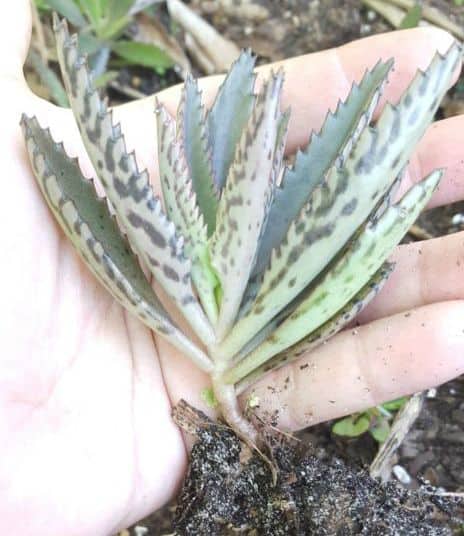Kalanchoe is a genus of plants composed of more than 120 species, typical of different parts of the world, many of them from Europe, Asia, and North Africa, but there are also some from different areas, such as Madagascar, which has several important species.
Some of the kalanchoe species are used for medicinal purposes because of their properties and benefits, to treat many different types of ailments.
This plant is cultivated in an ornamental way, both indoors and outdoors, and it is a plant that due to its morphology is capable of accumulating water in its leaves so that watering is more sporadic than in other indoor plants.
In this sense, the kalanchoe reminds us of cactus and aloes, which survive in different conditions but are capable of going for several days without water.
Kalanchoe daigremontiana and its properties
This variety, endemic to Madagascar and also called aranto or Devil’s Thorn. It contains bufadienolides, which are steroids and cardiac glycosides.
There is some controversy about the medicinal properties and benefits of Kalanchoe daigremontiana, and it also has some toxicity, but many of its proponents talk about it even serving to cure cancer, something that is not scientifically proven.
Among its components are minerals such as aluminum, iron, calcium, copper, magnesium, and silicon. In addition to flavonoids and acids such as malic acid, acetic acid, citric acid, and oxalic acid.
Some recognized medicinal properties of this species are at the skin level since it is useful as healing, disinfectant, and anti-inflammatory. Kalanchoe is used to heal deep wounds, as well as infections and burns.

Kalanchoe and cancer
As we were saying, there is some controversy because this plant has been marketed as effective against cancer or as an anti-tumor. This, although it cannot be said, if there is relatively recent evidence from scientific studies has shown that there are indications that certain components of this plant can have anti-tumor effects, as in this study from China published in the journal Environmental Toxicology.
On the other hand, an also recent study by two researchers from the University of Lodz, in Poland, shows that although there are benefits in kalanchoe bufadienolides due to their anti-cancer activity (in vitro), their medicinal use “continues to be limited by their narrow therapeutic index and the risk of developing cardiotonic effects.
Likewise, in their study, they recognize the medicinal possibilities of this plant, and they defend that it should continue to be studied at a scientific level.

Also read: The Incredible Benefits of Almonds for Your Health
Kalanchoe blossfeldian
The kalanchoe blossfeldiana is another of the varieties of this genre, in this case, it has been classified as a houseplant because it resists perfectly inside the homes.
Care
It is a plant that is grown for purely ornamental purposes. It is a plant that exists in many colors and it is perennial and it resists the changes of seasons, in spite of the fact that it does not resist less than 10 degrees of temperature, since it is more typical of warm climates.
You flower when the winter ends until the beginning of the summer. It needs to be watered approximately every three days.

Other types of kalanchoe
Besides the kalanchoe daigremontiana and kalanchoe blossfeldiana, other species widely used both ornamentally and medically are tomentosa, thyrsiflora, and beharensis.
Translated and adapted by Limepedia staff.
Sources: Facilisimo







